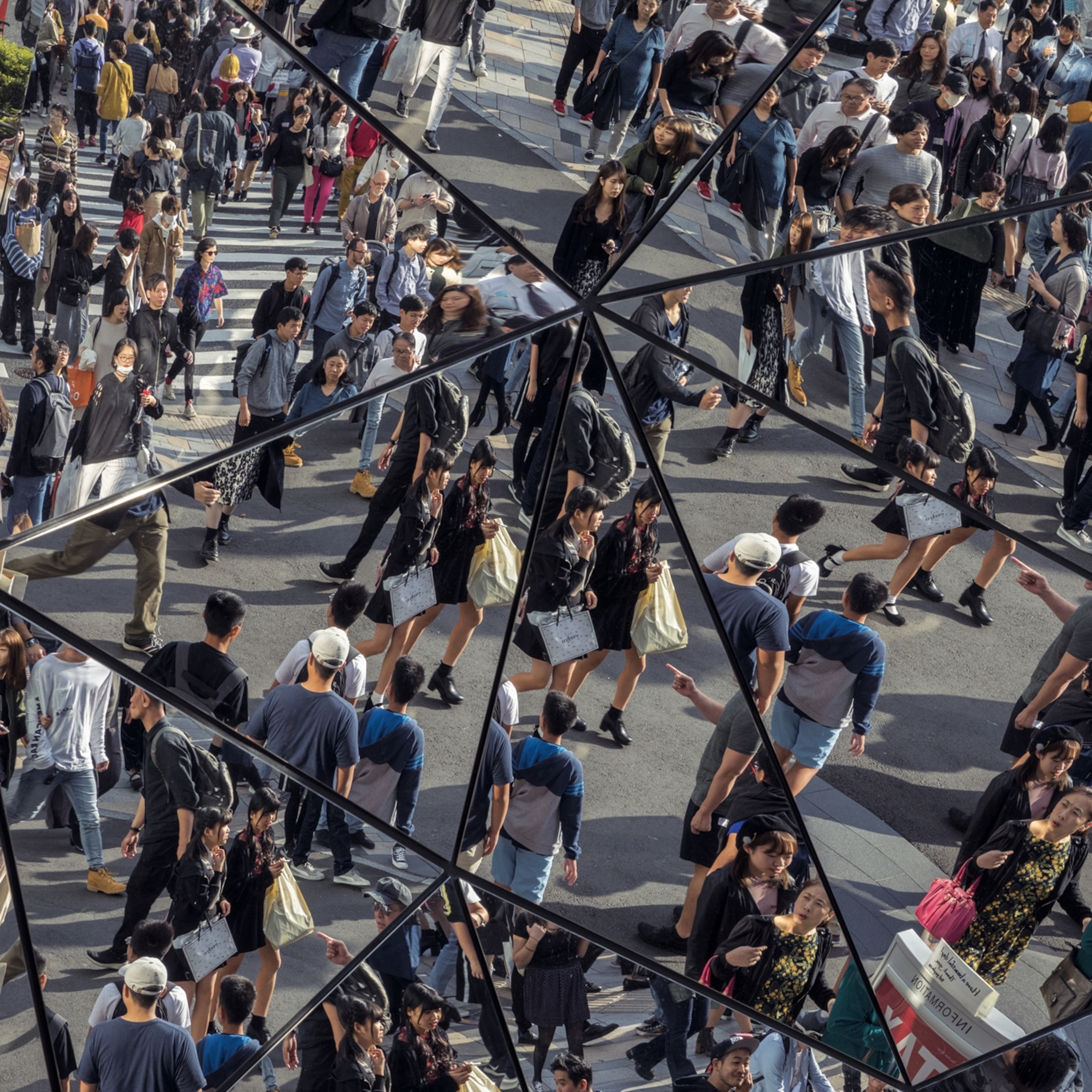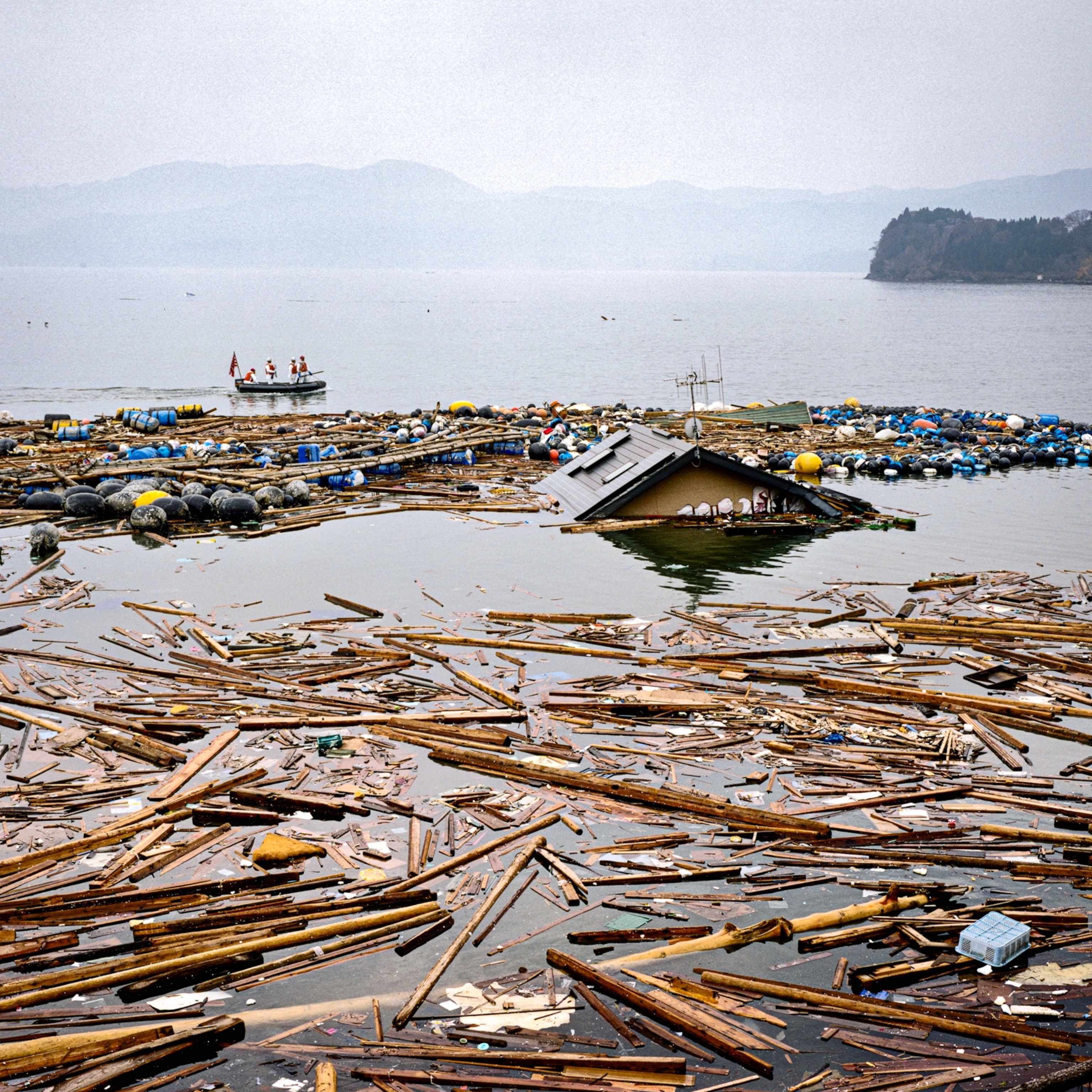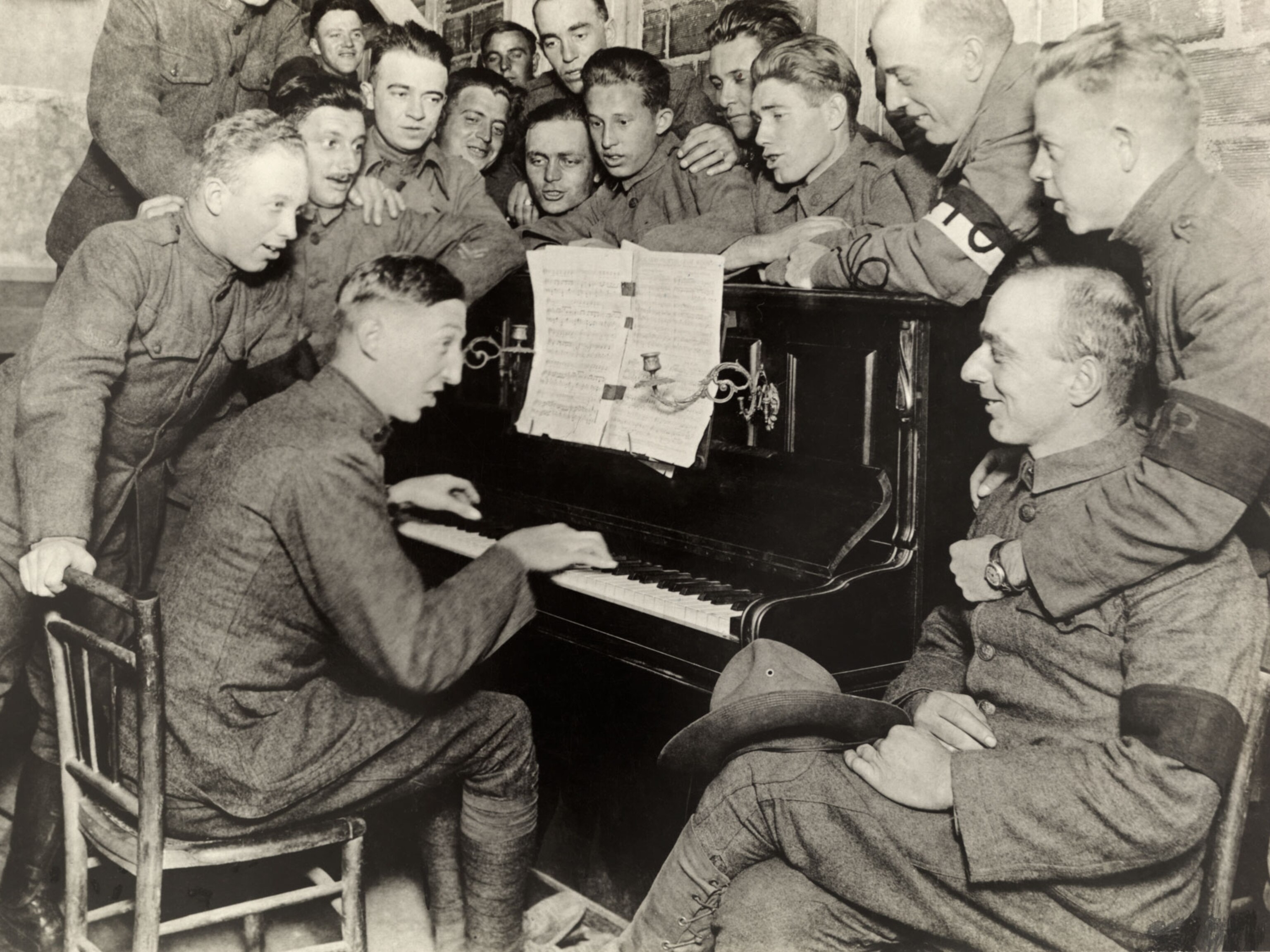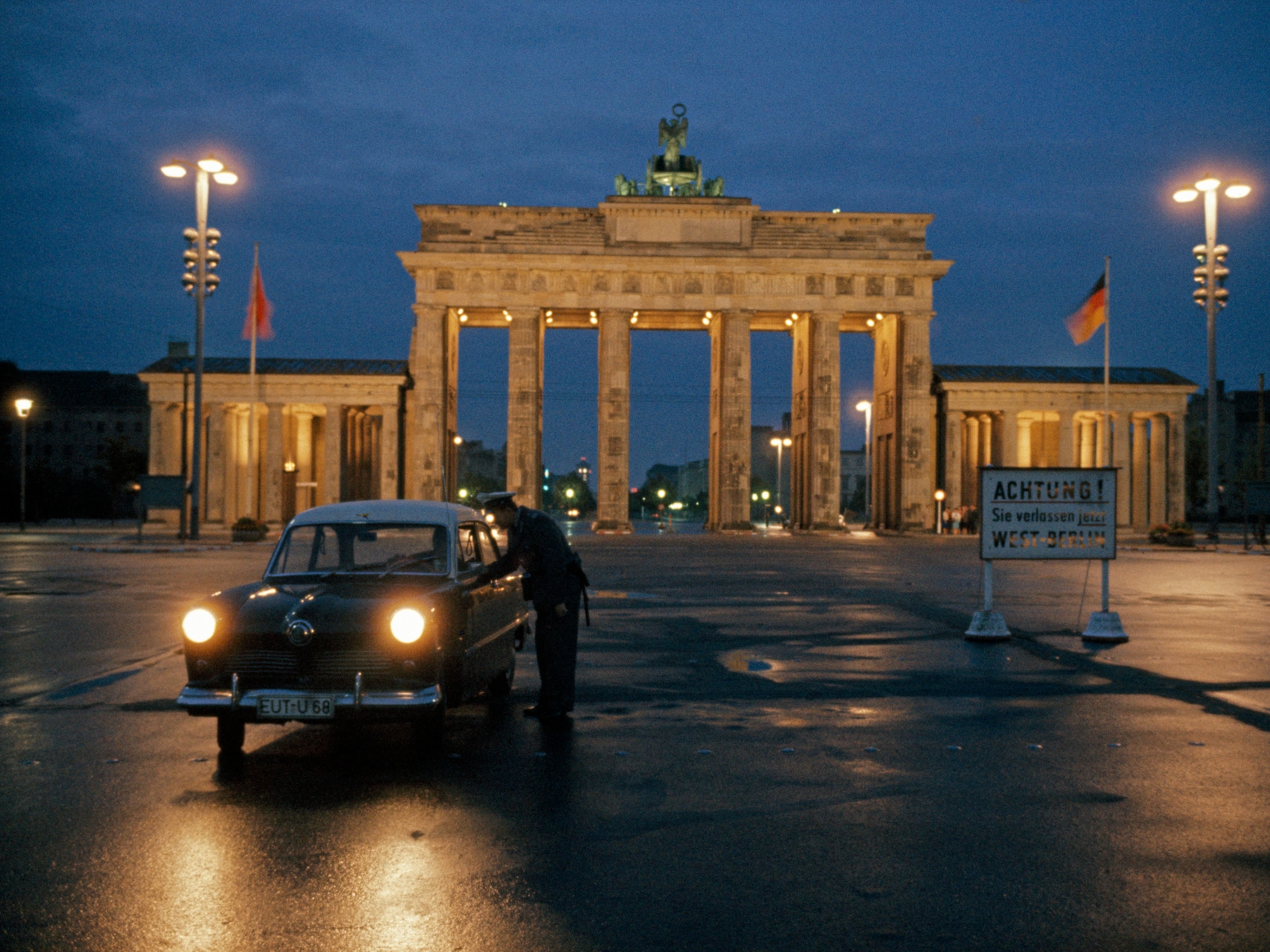
Tokyo became a megacity by reinventing itself
Walk through Japan’s energetic urban heart and see a vibrant, creative culture that bounced back from war and natural disaster.
Early on a cold June morning, I stood in darkness near the west bank of Tokyo’s Sumida River, watching tourists pull on bright nylon vests. They were green and glaring yellow, the sort of thing you’d wear in a pickup soccer game, as though the 70 shivering visitors from South Africa, China, Malaysia, Spain, and Russia had traveled all that way to chase balls along the gritty waterfront.
It was an hour or two before dawn, and we were actually suiting up for a tour of Tsukiji Shijo, which at the time was the largest fish market in the world. Tsukiji was a labyrinth of warehouses, freezers, loading docks, auction blocks, and vendor stalls, and it had fed the city for nearly a century. It had also become—to the dismay of some who worked there—an attraction, promoted in countless articles and cable cooking shows.
When I visited last year, though, the historic market was nearing the end of its run. The breezy stalls and cracked cobblestone floors lured tourists seeking authenticity, but in hypermodern Tokyo such things were officially seen as an unsanitary part of the unruly past. By autumn Tsukiji would close, its vendors moving from the heart of the city to a new, bland-looking facility to the southeast.
We queued up to march inside. Fish scales glittered in puddles at our feet and the air tasted of oil and low tide. Forklifts and rattling ice carts flew past in all directions, like panicked birds. I realized our mesh vests were partly for safety—so we wouldn’t get squashed in the traffic—but also so we couldn’t sneak off and gum up Tsukiji’s lucrative flow.
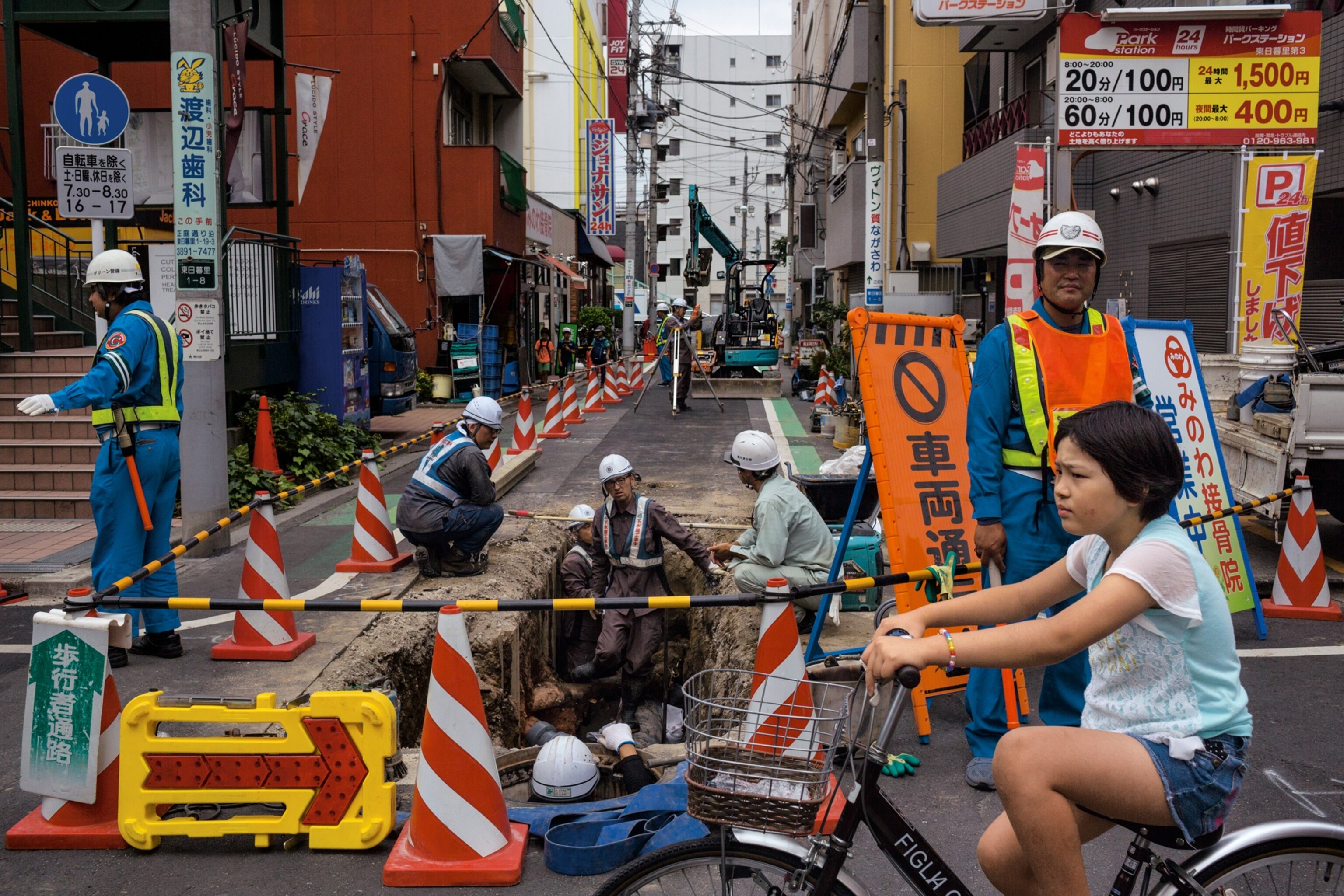

Each day, some 1,600 tons of fish, sea plants, and squirming invertebrates from all over the world poured into the market. At day’s end, that incredible haul, worth about $15 million, had been sorted, sawed into pieces, and shipped to retailers. By the time I’d arrived, at 4:30 a.m., the market had been roaring for hours.
Hundreds of men hustled through the haze, laughing and shouting, cigarettes clamped between their teeth. White-gloved security guards directed us past a heap of Styrofoam boxes, some as big as coffins, their insides streaked with blood. Ahead, in a cavernous warehouse, saw blades screamed as they tore into frozen fish flesh.
Most of the tourists had come for the famed tuna auctions, where giant fish from as far away as coastal Maine were sometimes sold for hundreds of thousands of dollars. But compared to the circus we’d just walked through, the auction, when we saw it, was a yawn—a bunch of quiet guys quietly bidding up the price of high-end meals in Tokyo, Moscow, New York City.
By 10 a.m. the action had ebbed and I slipped through the market alone, speaking with fishmongers who lamented the old market’s looming closure. Several hours later, only the delivery trucks still hummed, the drivers lounging in their cabs while forklifts packed fish into holds.
Near midnight I wandered out to a small Shinto shrine where a row of stone monuments honored several species of edible sea creatures. Tsukiji had been Gothic, thrilling, obscene—a rare spot where Tokyo’s sleek modern facade fell away to reveal raw appetite—and I was exhausted.
A cat brushed past my feet. The stone before me read sushi-zuka, “the monument to sushi.” In a few hours it would all begin again.
If you agree with Harvard economist Edward Glaeser that cities are humanity’s greatest invention, then Tokyo is perhaps our greatest example: a stunning metropolis, home to more than 37 million people and one of the world’s wealthiest, safest, most creative urban centers.
Even if you’re not particularly interested in how megacities shape human behavior, Tokyo is unavoidable—it has already changed your life. The city is the ultimate social influencer, the node through which the world connects to Japanese culture.

Tokyo is there in your morning matcha latte, your afternoon bowl of miso, that dinner of sushi. You find it in your kid’s fascination with Totoro, Gundam, Pokémon, or Sony PlayStation 4. And it’s in the tiny cell phone camera you both can’t stop using.
The city’s creativity can be traced, in part, to the fact that it’s been razed twice in the past 100 years—first by the Great Kanto earthquake of 1923, and a generation later by U.S. bombing raids during World War II. Each catastrophe forced the Japanese to bury history and rebuild, reimagining neighborhoods, transportation systems, infrastructure, even social dynamics. Tsukiji market itself was built in the aftermath of the Kanto quake, to replace one that had stood near the center of the city for 300 years.
In the 1950s, Tokyo rebounded and grew incredibly dense. Glaeser suggests this is a reason for its success: the creative agitation that follows from cramming together people of diverse ages and backgrounds and stripping away barriers to trade and ideas. In an issue dedicated to cities, we couldn’t ignore Tokyo. And the writer Jane Jacobs, a major influence on urban planning, said that the best way to know a city, to feel its mashed-up power, is to walk it.
So photographer David Guttenfelder and I did. For weeks we crossed and recrossed Tokyo, sometimes together, often apart; sometimes in a straight line, often leapfrogging from one area to another, working slowly through neighborhoods and industrial areas, school campuses, train stations, markets, graveyards, temples, and shrines. We had both lived previously in Japan, and we knew Tokyo could be buried beneath the superlatives used to describe it. We talked with nearly everyone we met, documented slivers of their routines and rituals. We couldn’t be comprehensive. But we could try to see more deeply, linking the city to the people who through their lives give it power.
SUGAMO: A spirited neighborhood for seniors
Some things hadn’t changed in 20 years. Police patrolled neighborhoods on white bicycles; kids barely bigger than their backpacks safely rode the subways alone. And most Tokyoites still live in Morse code rhythms, dashing between work and home on superefficient train lines. Just glancing at a map of the transit system conjures a diagram of neurons in the human brain. New York, where I live, has more stations, but each day some 10 million people ride Tokyo’s subways, more than New York City’s entire population.
On a clear Saturday morning, I walked through Hachiyamacho, Uguisudanicho, and Ebisunishi, caught a Yamanote Line train at Shibuya, and took it to Ikebukuro, where I got out and kept walking. In the northern neighborhood of Sugamo, clerks were wrestling tables and clothing racks out onto the pavement along Jizo-dori, hoping to lure customers from a stream of mostly elderly, female pedestrians. There were sweaters for sale and necklaces, kitchen goods, orthopedic devices, canes, knee braces, adult diapers. But it was the underwear that stood out—bright red briefs and panties, neatly packaged, arranged by size.
In Japanese culture, red is associated with good luck, good health, longevity.
Older women in twos and threes strolled along, pulling through the racks, pausing here and there to tug at a waistband, check a price, buy a pair. Younger people flitted past the stands or slipped into a nearby coffee shop, but the crowd was mostly elderly, ojii-sans and obaa-sans, grandfathers and grandmothers.
Cities often talk about themselves in terms of life, growth, youth—but old age and death are always there too, even when they’re largely ignored or treated as a matter of dull housekeeping. Harvard anthropologist Ted Bestor had pointed me toward Sugamo because here death is close to being on display. The neighborhood reveals a defining feature of Tokyo: its enormous, rapidly increasing elderly population.
“In Tokyo they don’t try to hide the old people away,” Bestor said. “It can’t be done. There are just too many of them. So the old folks have their own district; they make their own fun.”
Birth rates in most prosperous industrialized nations have declined substantially, but Japan is the most elderly of all. Nearly 30 percent of its population of 126 million is over 65. Deaths outnumber births. And while Tokyo is graying slightly less rapidly than the rest of the nation, its share of the burden will be enormous, leaving the city scrambling to decide how it will care for, pay for, and house the generations that built it.
Aging is expected to drain the economy. But there’s a psychic cost too, illustrated most dramatically by kodokushi, a phenomenon often translated as “lonely death,” in which a person dies and remains undiscovered for days or weeks. By 2035 more than one-quarter of Tokyo will be over 65, and many of those people will live alone.
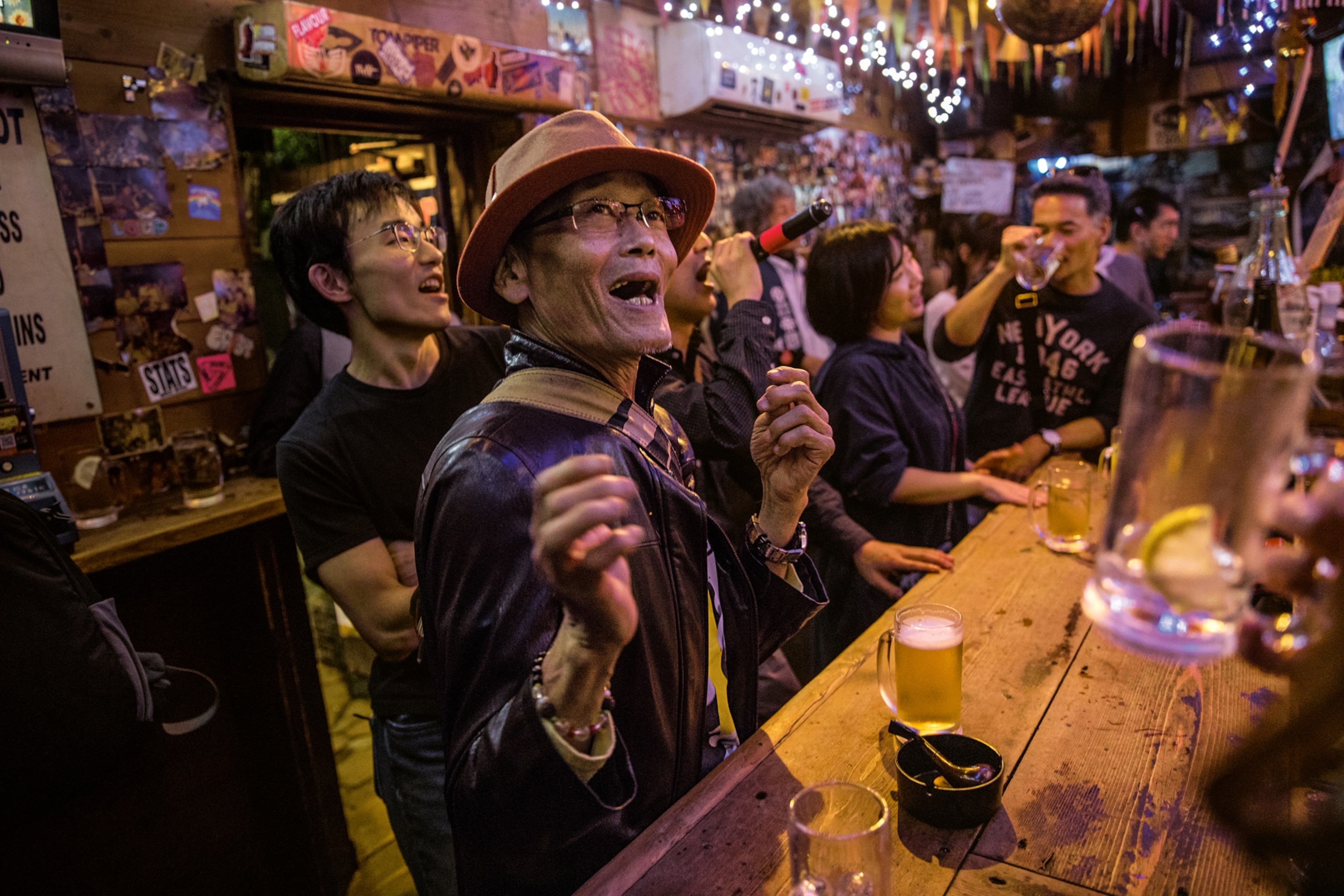
In Sugamo, though, there was no sense of gloom or hopelessness. The crowd shopping for end-of-life care and crimson thongs flowed easily along Jizo-dori, laughing, arguing, shouting into mobile phones. Outside one shop a man and a woman gazed into the window, talking of robots. The Japanese government, which faces a labor shortage along with the aging problem, is subsidizing the development of robotic caregivers.
“Can we buy one to take care of you yet?” he said gently. Beside him stood the elegant older woman wearing a wide-brimmed hat against the morning sun.
“You’re stuck with me,” she said. “Those things are too scary.”
SENDAGAYA: A slice of Silicon Valley in Tokyo
Masanori Morishita is tall and thin, his dark hair thick and wild. He seems to vibrate, in the way of people driven by a slightly faster internal clock. Morishita is a serial tech entrepreneur and had recently sold his start-up, Everforth, to a larger technology company for a sizable sum. After the sale he stayed on to develop his product, and on the day I met him in the west-central neighborhood of Sendagaya, he was doing his best to fulfill another role: that of a visionary 30-something CEO who was relaxed enough to throw a barbecue for the company.
It was held at Morishita’s new home, a narrow four-story stand-alone structure in a small cluster of houses near an old graveyard. Morishita had leased the home with plans to transform it into a live-work space where his engineers, sales team, and others could collaborate elbow to elbow. Offices were outfitted with whiteboards; there were bedrooms for employees, plus a wine cellar and a library, its shelves mostly bare.
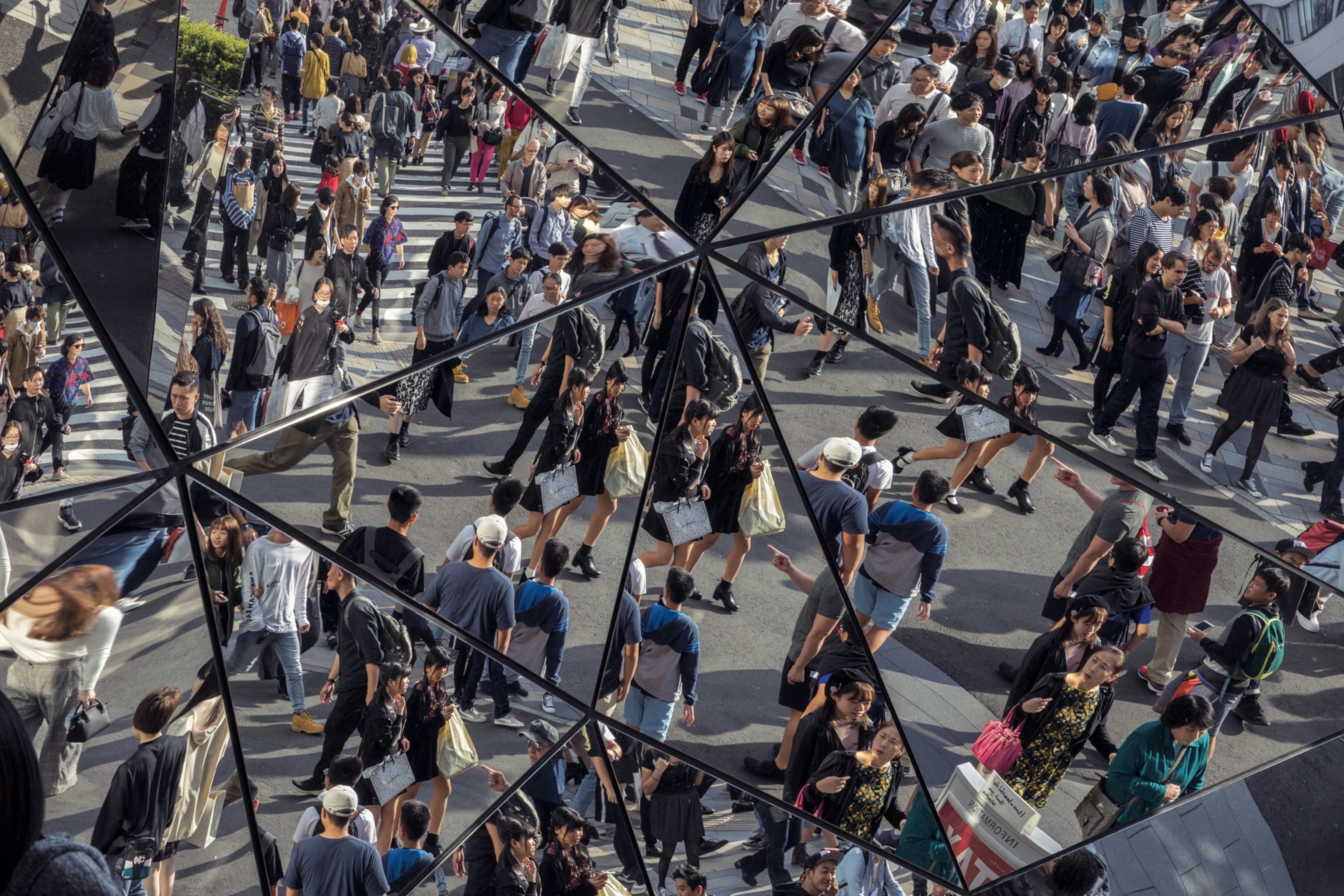
On the roof, Morishita flipped chicken over glowing coals (he had made the dressing for the salad himself) and outlined his plan to undermine traditional Japanese values with tech-inspired ones. It began with his house.
“I like Silicon Valley culture,” Morishita said. “I’m trying to do that here, but it’s difficult.”
He waved his tongs at the city.
“Japanese culture, you know, it’s very strict. Ordered. Organized. People like to be told what to do.” The house, he said, and the new ways of living and working that it embodied were revolutionary.
We looked at the skyline to the east, where cranes rose over the site of Japan’s new national stadium in the adjacent neighborhood of Kasumigaokamachi. It is the centerpiece of Tokyo’s redevelopment effort for the 2020 Summer Olympics and will seat 68,000 spectators for the event.
The quiet neighborhood could be transformed by the nearness of the stadium, but Morishita was unconcerned. He was busy unplugging his work from the physical and social infrastructure that had held Tokyo together for decades—the crowded trains and roads, the obligatory after-work drinking parties, the stringent traditions that had, in his mind, prevented Japan from truly developing a Silicon Valley of its own.
“What I really want is freedom,” Morishita said.


ASAKUSA: A new type of urban design
A few weeks later, in a neighborhood called Asakusa on the other side of the city, I met with Kengo Kuma, the architect who designed the new national stadium. Kuma, one of Japan’s leading talents, is older by a generation than Morishita, but the two share a fundamental desire to remake the city.
We sat in a small room on the third floor of the Asakusa Culture Tourist Information Center, which, like nearly all the buildings Kuma has designed, is both hypermodern and surfaced in natural materials, in this case wood—a combination intended to lend warmth and presence while also paying homage to traditional Japanese craftsmanship.
It was a hot, humid day, and I wanted to talk about the density I had been walking through. Kuma is sometimes taken for an anti-urbanist—opposed to the mass and hardness of cities—but he was quick to reject that label.
“People say I’m a critic of cities,” he said, shaking his head. “I want to reshape the city. I want to break space up and return things to a smaller scale.” That smaller scale, he said, was once a defining feature of Japanese life, and would allow for more trees, gardens, parks—and more human connections.
Kuma has designed hundreds of structures across Japan and in other countries, and I might have crossed Tokyo simply by neighborhoods that contain his work—an elegant udon restaurant fitted inside an old fireproof warehouse, a university computing center sheathed in cedar shingles, a cake shop covered with a lattice of timber that’s meant to suggest a forest.
Of course the massive oval stadium will likely define him to future generations. But even that wears Kuma’s vision—a future in which structures are built for multiple uses over their lifetime and sit lightly on the landscape. After the Olympics his stadium will be converted for use as a soccer arena. It will sit in a grove of trees, and its several floors will be ringed with more greenery, planted around open-air walkways. The stadium’s roof is also open, allowing natural light to flood its interior.

“We do have a density problem,” Kuma said. “Our urban design up until now was to find land and put a huge building on it ... Destroying everything to make way for skyscrapers and shopping centers—that has been the method in Asia.”
Density intensified after the Kanto earthquake, he explained, and it increased again after the destruction of World War II. Many of the world’s great cities are ancient accretions, three-dimensional records of human behavior built up over centuries. But contemporary Tokyo was built quickly and haphazardly, its buildings, highways, and train lines pushed into blanks created by bombs and fire.
The consequences, Kuma said, are revealed in some of Tokyo’s darkest contemporary problems, including kodokushi, the lonely death. He reached out and tapped a concrete pillar beside him.
“My students prefer to live in shared houses now. That’s new ... That kind of lifestyle was abandoned after the war. We’ve been living in isolated spaces, separated by concrete. People don’t want to do that. They know it’s bad for them.”
Kuma was animated, sketching with his hands as he described Tokyo. Many ideas he supports, from environmental sustainability to programs aimed at “returning nature to the city,” have slowly gained ground. When we later climbed to the tourist information center’s rooftop observation deck, Kuma described Japan as a “mature society”—wealthy, technologically advanced, and aging. Ready, in other words, to grow more responsibly.
“The best thing we can do,” he said, “is set an example ... We can show how to do things differently.”
The roof was packed with tourists photographing Tokyo’s skyline or gazing down over Senso-ji, a sprawling Buddhist temple complex that is no less superlative than the city itself; millions of pilgrims and tourists visit each year. Scents of sunblock, sweat, and incense rose up through the languid air.
We watched crowds pouring into the temple through Kaminarimon, the “thunder gate,” just across the street. To the east a short dark building squatted on the opposite bank of the Sumida River. Part of Asahi Breweries’ world headquarters, it’s topped with an enormous golden plume that is said to represent a flame. A lot of people just call it “the golden turd.” Kuma grimaced. Every building has a life, he said, and we should strive to be in harmony with it. “The position of [this one] is very important in front of the Kaminarimon gate. In designing it I want to show respect to the gate, the street .... Many people think history is history. Well, we live in a different age, but we’re still speaking with the past.”

MINAMISENJU: Where they suffer to bring luck
Toshio Tajima sat on the steps of the Shinto shrine in Minamisenju, a gritty neighborhood in east-central Tokyo, watching for his team of spirit-movers. It was a warm Friday in June, festival time, and traditional music—flutes, strings, drums—was blaring from loudspeakers mounted on telephone poles. Tajima, a large and serious man, was annoyed. Some 200 men were supposed to gather beneath the tall ginkgoes in the quiet courtyard, but only a dozen or so had showed and the local spirit, a deity named Susanoo, the storm god, was being made to wait.
Tajima and the others were dressed traditionally and for teamwork, in identical happi jackets made of light cotton and wearing white jika-tabi, the split-toed shoes of the Japanese laborer. In anticipation of hard work, most also wore shorts, though a few guys had opted to gird their loins in a traditional fundoshi, a sort of jockstrap crossed with a thong.
In one hand Tajima held a megaphone. The other he balled into a fist. He had short dark hair, a neat mustache, and a white bandanna knotted around his head. When he finally stood, out of restlessness, I noticed a weird lump at the back of his neck. It jiggled. Tajima caught me staring, and he tapped the lump. It jiggled some more.
“That’s my mikoshi-dako,” he said, obviously proud.
An older man stepped over and admired it.
“It’s a huge one!” he said. Then he half-turned and pointed to his own slightly smaller lump. “Only dedicated men get these.”
I’d never heard of a mikoshi-dako. Tajima explained that the word combines the terms for the portable shrine and “calluses,” though the lumps were nothing like any calluses I’d ever seen. They were squishy. A little gross. As I tried to imagine what could possibly cause them, the older man, Teruhiko Kurihara, laughed and pointed toward what looked like an oversize dollhouse set atop long, thick rails.
“That’s the mikoshi,” he said. “You get the dako from carrying it.” He gave his callus a happy slap.

The mikoshi was almost as big as a Mini Cooper, decked in gold hardware, sheathed in black and red lacquer. Paper screens filled the miniature windows, and hand-carved posts stood before hand-carved doors below a steeply pitched roof. It was a near replica of the actual shrine behind us, scaled down to portable dimensions. Every neighborhood in the area has its own portable mikoshi, and for the festival, Shinto priests had ceremonially transferred each neighborhood’s deity into their mikoshi.
Soon about 40 men had arrived, all in identical outfits, and Tajima decided it was enough to get things moving. They gathered around the mikoshi and placed their hands on the smooth rails. At Tajima’s command they bent their knees, braced their shoulders, and lifted.
Such festivals are common in Japan, and that afternoon I’d already seen other teams ferrying mikoshi down the streets, blocking traffic, pausing now and then for beer and snacks. For several days the mikoshi would float through their respective neighborhoods in a communal ritual meant to bring good luck and refresh ancient faith. On the last day—the big day—all the mikoshi would be hauled back to the local shrine. There’d be a huge party, Susanoo and the other spirits would be returned, and people would literally limp home.

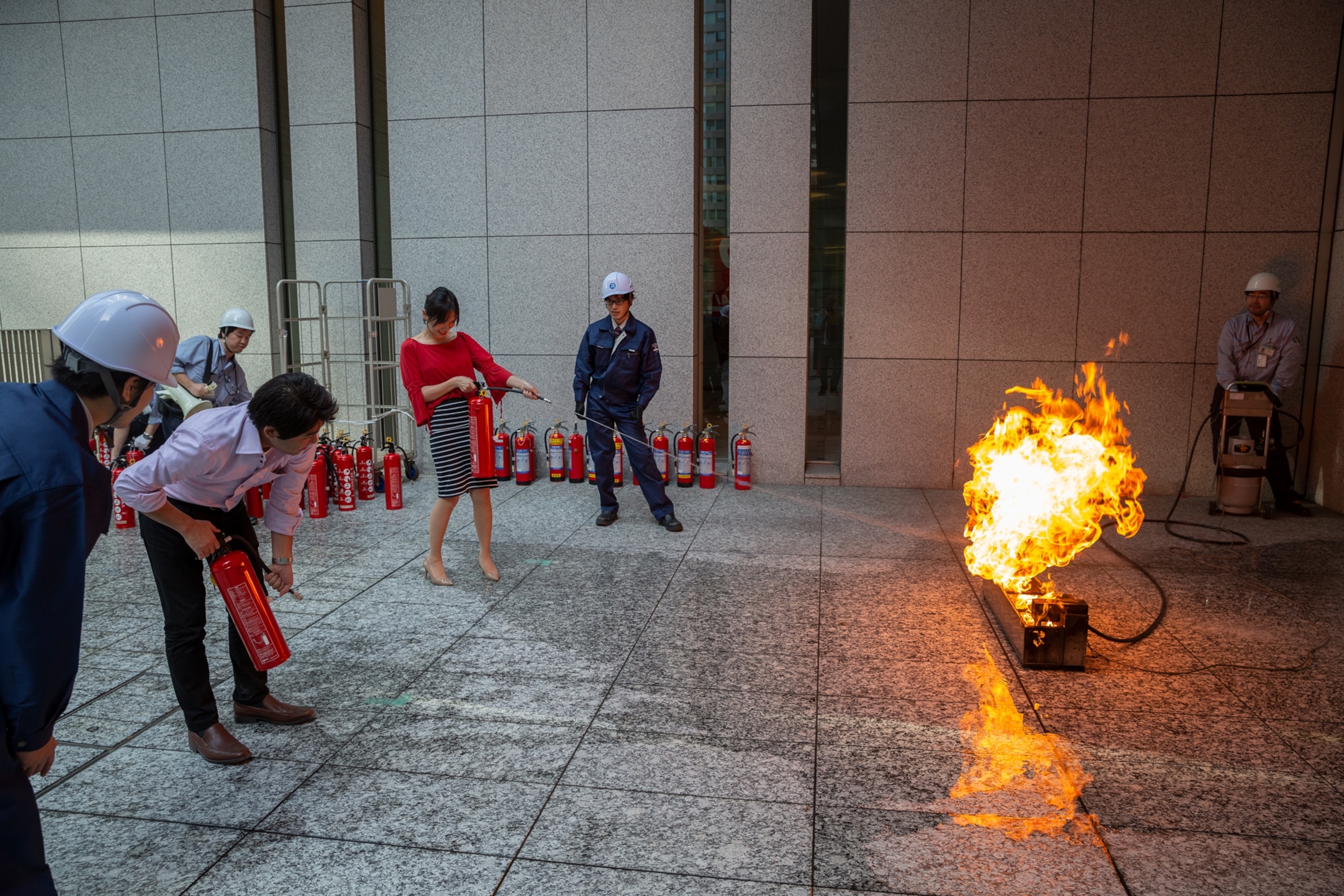
The mikoshi in front of Tajima wobbled upward onto the shoulders of its devotees, and they moved it across the courtyard, marching in practiced unison. When they reached a certain sacred spot, the procession stopped. Tajima yelled instructions, and the mikoshi began to rock, a gentle swaying at first, the men chanting and pushing. But slowly the shrine picked up momentum, and suddenly it was hurtling toward the ground, the men underneath certain to be crushed—until disaster was somehow averted and the shrine was thrown over to its other side. Back and forth it went, again and again, the shrine tossed like a boat on a seriously angry sea, battering necks and shoulders below.
Tajima laughed at each near wreck. “Faster!” he shouted.
Beneath the shrine, men grinned and groaned and heaved; the gravel at their feet grew dark with sweat.
At my shoulder Kurihara said, “Our god likes it rough!” Then he asked, “Want to try?”
He tapped a man out; I slipped in. Even with the entire team beside me, the burden felt personal. The mikoshi bit into my spine. It was easily a thousand pounds of bone-crushing wood, gold, and lacquer, and it punched me downward like a fence post. After a few minutes I had an apple-size bruise over my cervical vertebrae that would ache for a week. Kurihara tapped me out. I felt several inches shorter.
“What’s inside that thing?” I said.
Kurihara shrugged. He owned a nearby flower shop and had shared the suffering and joy of this tradition with his neighbors for more than 20 years.
“It’s the spirit,” he said. “It’s really heavy.”
Tajima’s team marched out of the courtyard and onto the streets of Minamisenju. White-gloved policemen held up traffic. Soon a crowd had gathered around the shrine, spilling out of homes and shops, people shouting support or jumping in for a turn. Every few minutes they would stop and shake the shrine, building momentum until it nearly toppled and dozens of hands reached up to stop the fall.
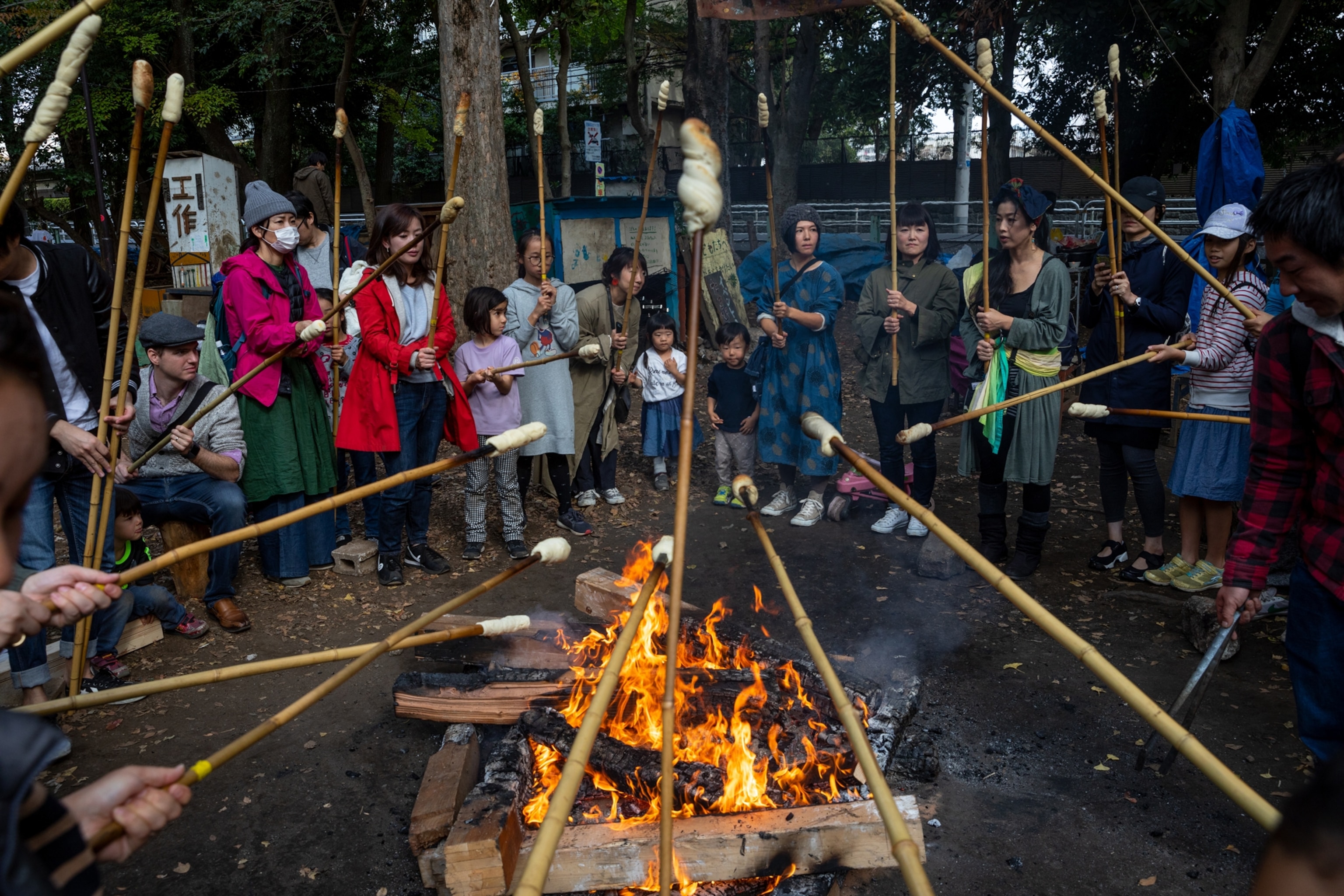
CHUO: In city’s heart, a call for diversity
Tokyo Prefecture’s governor, Yuriko Koike, admitted that she sometimes misses chaos.
Koike, Tokyo’s first female governor, attended university in another massive metropolis—Cairo. It’s hard to imagine two places more utterly opposed, but for Koike, that was part of the allure.
“What’s attractive about Cairo is that it’s chaotic,” she said, smiling at memories of hectic streets, the ancient souk. “But of course what’s attractive about Tokyo is that everything is controlled.”
We were walking down a shaded gravel path in the central Hama-rikyu Gardens, a calm refuge of manicured lawns and flower beds with stands of black pines, crape myrtles, and cherry trees flush against the Sumida River.
Koike had once been a news anchor, and she’d leveraged her Cairo experience into interviews with Arab leaders like Yasser Arafat and Muammar Qaddafi. In the 1990s she pivoted to politics and spent 24 years as a member of the national Diet, during which time she served in the cabinets of two prime ministers including serving, briefly, as Japan’s first female defense minister. She was elected governor in a landslide in 2016. The decisiveness of her victory suggested that the male monopoly on power might finally be slipping.
Koike, who is often labeled a conservative, has spent much of her tenure fighting, or at least talking about, what she has called Japan’s “iron ceiling.” In office she has embraced environmental causes and urban sustainability, and like architect Kengo Kuma she seems to sense that Tokyo has reached a point of middle age from where it might begin a second act.
The city is technologically and financially capable, Koike said, of making itself greener and preparing for technical details of future problems like, for example, sea-level rise. But social issues are slipperier.
“What’s missing now in Tokyo is diversity,” she said. “And one of the pillars of a diverse city is to have more women involved.”

Arriving from Brooklyn, I found Tokyo’s absence of diversity a regular, striking feature of my journey. Sizable populations of Koreans and Chinese live in Tokyo, and many of those families have been there for generations. The number of “international residents” has also increased over time—in 2018, one in 10 Tokyoites in their 20s were non-Japanese. But in a city so vast, those groups faded quickly, and diversity, whatever its form, remains an awkward subject in Japan.
The nation’s rapid reinvention after World War II has often been attributed—by foreigners and Japanese alike—to its perceived homogeneity, a broad belief that Japan is ethnically and linguistically united, that together its people value harmony above all else, with good measures of obedience, loyalty, and self-sacrifice.
These are risky notions, a list of model Asian behaviors perhaps better chalked up to a cartoon samurai. But some Japanese consider them to be sacred and even vulnerable qualities, the sorts of things an influx of outsiders would dilute, or destroy.
Koike herself has been criticized for talking diversity without doing much to enable it. But her election itself was seismic and may yet prove part of a broader shift. The 2020 Olympic Games have provided motivation for Tokyo to move more quickly on diversity, Koike said. After all, tens of thousands of foreigners are expected to visit during the games, offering a chance to show off. And she understands that Tokyo’s composition will soon change no matter what. If nothing else, old age guarantees it.
“Our biggest difficulty is how to handle the aging population,” she said. “But Tokyo is one of the centers for overcoming great challenges.” She adds that “resilience isn’t just Tokyo; it’s a Japanese characteristic. People are very serious, and they take things seriously.”
A cool breeze lifted off the water, pushing away, for a few moments, the heavy damp air and ruffling nearby pines. In the distance, cargo ships blared their horns.
The governor said her day had so far been consumed with the shutdown of Tsukiji market.
There were problems. It was complicated. Just another superlative project in the superlative city.
We walked back across the park to her small white van. Koike has been active in Tokyo for nearly 40 years and is presiding over immense transformation—less dramatic than war or fire but equally profound. Cities tend toward disorder, and in a way Koike’s job is to remember how chaos so recently consumed Tokyo. Then she is compelled to spend her days keeping it at bay.
I asked how she thought the city had changed over her lifetime. It was a standard journalist’s question, one she herself had probably asked many times during her earlier career. The governor laughed.
“I know it has changed, but sometimes it feels as if it hasn’t,” she said. “When you are part of the story, sometimes it’s hard to see.”

